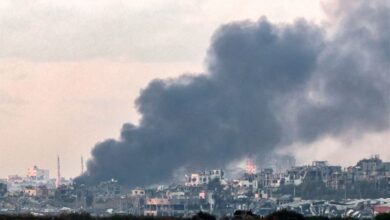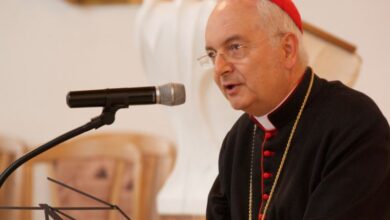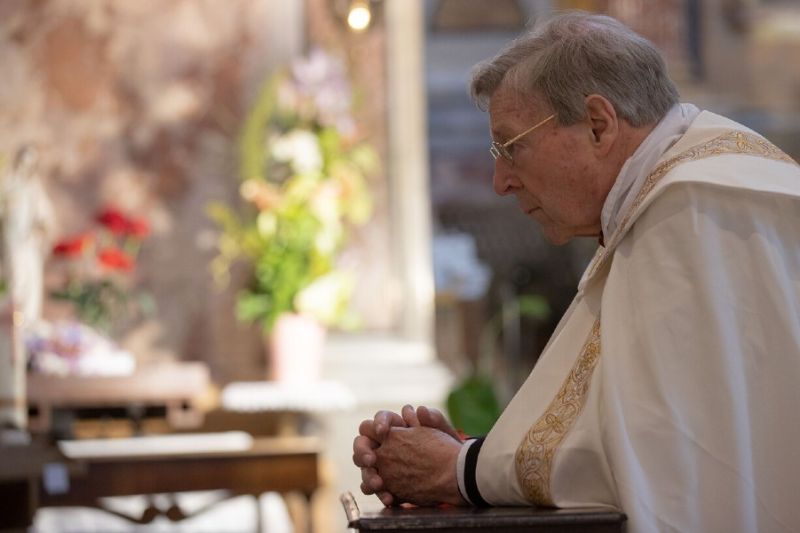Six popes are buried at St. Mary Major; Pope Francis says he’ll be next
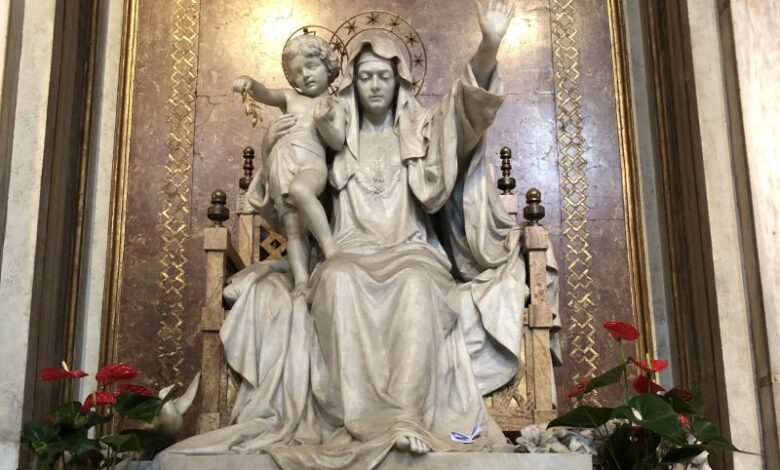
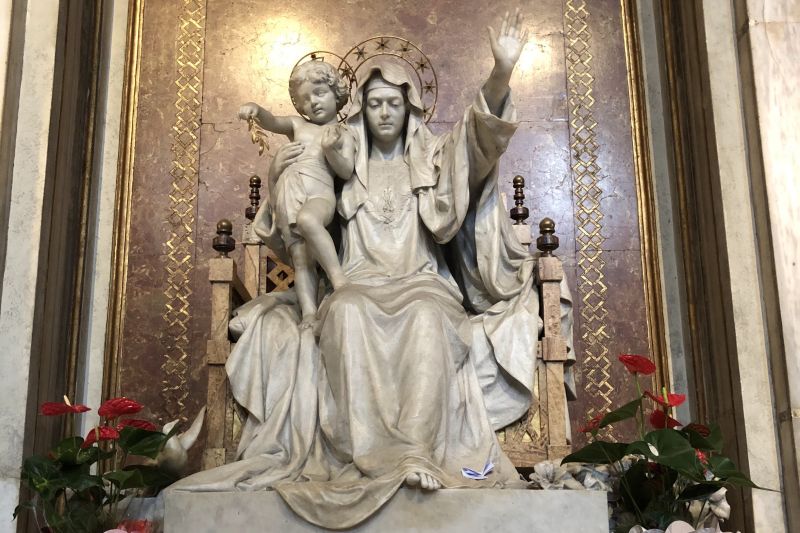 The statue of Our Lady, Queen of Peace in the Basilica of St. Mary Major. / Credit: Jonah McKeown/CNA
The statue of Our Lady, Queen of Peace in the Basilica of St. Mary Major. / Credit: Jonah McKeown/CNA CNA Staff, Dec 14, 2023 / 17:15 pm (CNA).
Pope Francis said this week that a “place is already prepared” for him to be buried at the Basilica of St. Mary Major, and not — as has been the custom of popes for over a century — at the Vatican.
With roots stretching back to the fifth century, St. Mary Major (called Santa Maria Maggiore in Italian and sometimes referred to as Our Lady of the Snows) is one of the most famous Catholic churches in the world and one of the four “major basilicas” located in and around Rome.
Pope Francis has made more than 100 visits to the basilica since becoming pope, most notably to venerate the icon known as the “Salus Populi Romani” — “Mary, Protection of the Roman People” — before and after every international trip.
Here’s a look at the tombs of the six popes who are buried at this church, one of whom is a saint. (Information on each pope comes from the 1917 Catholic Encyclopedia unless otherwise noted.)
Pope Honorius III (1150–1227)
Born Cencio Savelli, Honorius III was the first pope to be buried here after his death in the 13th century. He served as part of a chapter of priests who helped to administer St. Mary Major before becoming pope and held other important positions before his election.
Honorius III is perhaps most notable for having confirmed St. Francis’ second “rule” — a plan of life and discipline — for the saint’s then-new religious order. Innocent III had first approved a simple rule for the new order in 1209, but the “second rule,” approved by Honorius in 1223, is the one that Franciscans still profess today.
Pope Nicholas IV (1227–1292)
Girolamo Masci was elected pope in 1288, the first Franciscan to hold the office. As pope, he sent missionaries to Bulgaria, Ethiopia, China, and the Tartar people of Central Asia. He built the palace next to St. Mary Major, the church that was to become his final resting place.
In 1292, Nicholas IV commissioned the first known Nativity scene figurines, inspired by St. Francis of Assisi, the creator of the first living Nativity in Greccio, Italy, in 1223.
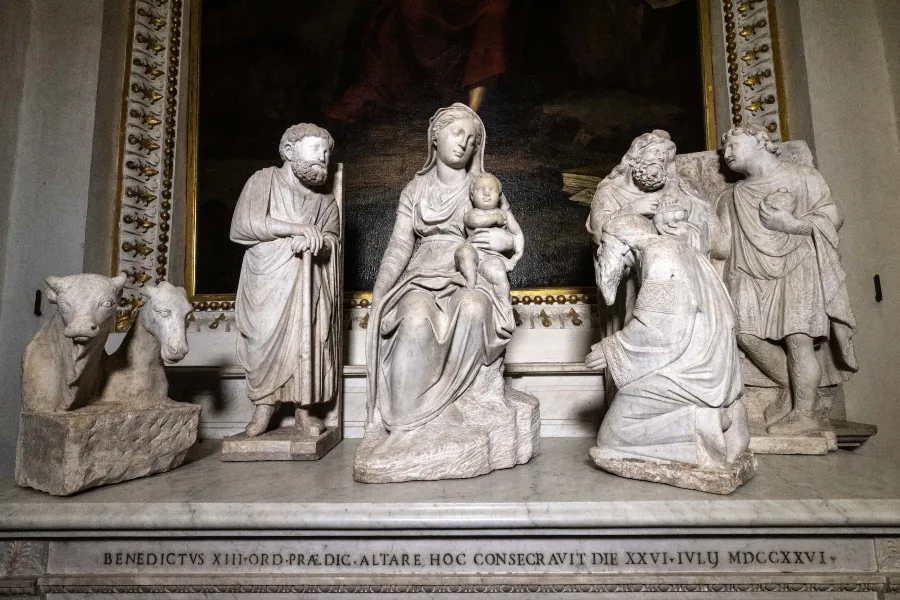
St. Pius V (1504-1572)
The only saintly pope to be buried here — though not the only saint — Pius V was born Michele Ghislieri in 1504 to poor parents of noble lineage. He was a Dominican known for his austere penances and long hours of prayer and fasting. He was elected pope on Jan. 7, 1566, with the influential backing of his friend St. Charles Borromeo.

His pontificate was dedicated to applying the reforms of the Council of Trent, which took place from 1545–63 in response to the Protestant Reformation. As pope he set about raising the standard of morality of the Catholic clergy and strongly supported foreign missions. The Catechism of the Council of Trent was completed during his reign.
Ironically, Pius V promulgated a new Roman Missal in 1570 that is still used today as part of the Tridentine Mass, also known as the Traditional Latin Mass — the celebration of which Pope Francis has moved to curtail throughout his papacy in favor of Pope Paul VI’s 1970 missal.
A devotee to Mary, Pius V established the feast of Our Lady of the Rosary, which is celebrated each year on Oct. 7.
Pope Sixtus V (1521–1590)

Few popes had as much of an effect on the city of Rome itself as Felice Peretti, Pope Sixtus V. In addition to reforming the Church’s finances, he made far-reaching changes to the Church’s governing structure. He is perhaps best known for his massive public works projects throughout Rome, including the building of magnificent streets and the moving of a massive obelisk into the center of St. Peter’s Square. He also built the Chapel of the Cradle, which is said to contain relics of Jesus’ manger, at St. Mary Major.
Pope Clement VIII (1536–1605)

Ippolito Aldobrandini was elected pope in 1592. St. Philip Neri was reportedly his confessor for 30 years.
Known for his reforms amid major contemporary geopolitical problems, Clement VIII also issued revised editions of the Latin Vulgate Bible in 1598, and also new editions of the Church’s breviary and missal.
Pope Clement IX (1600–1669)

Clement IX, born Giulio Rospigliosi, is the most recent pope to be buried at St. Mary Major, having been laid to rest there more than 350 years ago. Clement requested that he be buried at St. Mary Major with merely a simple inscription, but his successor erected a large statue and monument to him inside the church.
After his election as pope, Clement reportedly manned a confessional at St. Peter’s Basilica two days a week and heard anyone who wished to confess to him. He frequently visited hospitals, was lavish in his alms to the poor, and resisted the then-widespread practice of nepotism.
He is perhaps most notable for declaring St. Rose of Lima a Blessed in 1668, and she would go on to become the first saint from the Americas.



